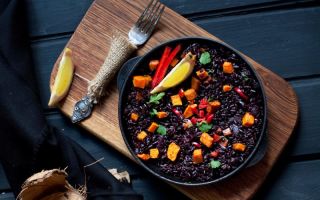Content
Proper nutrition is the key to a healthy lifestyle. Modern nutritionists note that interest in foods that have beneficial properties and a plant-based basis has increased dramatically these days. People strive for healthy nutrition, enrich the diet with new composition and tastes. The benefits and harms of wild rice is one of the most common topics among adherents of a healthy diet.
What does wild rice look like and where does it grow?
Quicania aquatic, or Indian rice, is an annual plant that can be found on the shores of water bodies in North America. In other countries, rice is grown artificially.
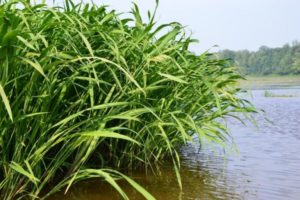
A feature of the cereal is the absence of rhizomes. Flowering occurs at the end of the summer period, after which the grain begins to ripen. The plant has a straight light green stem and, under favorable conditions, stretches up to 2 m.
The appearance of the grains has the main feature: they are black, oblong and oval, similar in structure to the usual white grains of rice.
Rice is one of the oldest cereals, and although its cultivation began only in the middle of the last century, before that, the tribes of North American Indians knew about the seeds, who successfully used the useful plant for cooking.
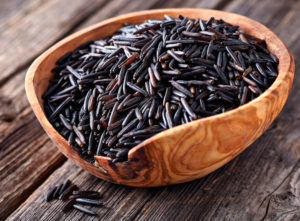
Composition and calorie content of wild rice
The beneficial properties of wild rice differ significantly from those of cereal relatives. It is gluten-free and rich in beneficial compounds:
- amino acids (Isoleucine and valine are considered especially useful);
- B vitamins (high in beneficial folic acid);
- micro and macro elements (especially valuable - potassium, magnesium, cobalt, selenium).
The composition of wild rice determines its nutritional value. The calorie content of raw rice is 337 kcal per 100 g, but the cooking process saturates the rice with water, dilutes the structure of the chemical composition, and reduces the calorie content to 101 kcal. Boiled rice contains up to 4 g of protein, up to 22 g of carbohydrates and about 0.3 g of fat.
Why wild rice is good for you
The benefits and harms of wild rice for the body are determined by the properties of the chemical elements that it contains.
The presence of isoleucine among amino acids contributes to the active production of proteins in the body. This acid is essential for metabolic processes that provide positive changes at the cellular level. In combination with valine, it inhibits the production of serotonin.
Both amino acids are involved in the active formation of the necessary hormones, their properties increase in combination with enzyme compounds.
Folic acid is especially beneficial for pregnant women. A side dish of black cereal for the main course will replace almost half of the required daily amount of folic acid.
Benefit magnesium for the body lies in the supply of energy to the cells. It is indicated for those people who are experiencing increased stress. Its deficiency harms the body, which will burn to manifest itself in limb cramps, the development of anemia.
Zinc has beneficial properties: to participate in the synthesis of necessary hormones, to help in the normalization of metabolism.
Weight loss benefits of wild rice
Grain is regarded as a valuable product in dietary nutrition. It does not contain fat, but it is rich in "fast" carbohydrates, which have the beneficial property of being easy to digest and not activate fat storage.
The structure of rice helps the intestines to get rid of toxins, prevents irritation of the stomach walls.
The benefits and harms of wild rice for weight loss depends on the amount of its consumption.
How to cook wild rice
The cooking technique of the product has its own characteristics. It is little exposed to the destructive effect of heat treatment, therefore, after cooking, it retains a certain pleasant hardness. To maximize the benefits of eating a product and minimize possible harm, it must be properly prepared:
- The groats are soaked in warm water for 5 - 6 hours.
- Washed twice.
- Cook over medium heat after boiling for about 40 minutes.
Wild Rice Recipes
Of the many healthy ways to cook rice, boiling and baking are the most popular. All recipes are for the finished product.
Wild Rice Pudding
The recipe is very common. It tastes significantly different from the white cereal version of the same name, and its benefits are higher. Baking also helps preserve the main health benefits of the product.
For pudding take:
- black rice - 100 g;
- low fat milk - 200 - 300 ml;
- salt, sugar, vanillin, berries - to taste;
- butter or vegetable oil.

Rice is boiled in water until the grains are soft, then milk is poured and boiled until viscous. In the process of cooking, add salt, sugar, vanillin to taste. After the pudding is ready, it is watered with the berry syrup prepared in advance and garnished with fresh berries. Such a dessert is recommended for those who adhere to a healthy diet, but want to pamper themselves with sweets.
Wild rice in a slow cooker
Modern technology is beneficial in the kitchen, making it easier to cook many dishes. Cooking wild rice in a slow cooker will take about 50 minutes after the traditional soak. Vegetable oil is poured into the bottom of the container of the device, washed rice is poured, poured with water in a ratio of 1: 3, salted, covered with a lid, cooked in the "pilaf" mode.
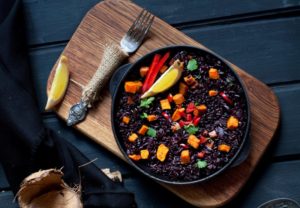
Harm of wild rice and contraindications to use
The harm of wild rice is considered from the point of view of an overabundance of this product in the diet. The recommended daily dose in a variety of dishes should not exceed 300 g.
It is worth noting that almost any useful product can be harmful if abused. The main danger of such abuse is the development of complications in the work of the digestive system.
It is also harmful to eat rice for those who are already experiencing problems with the intestines. An excess of the product leads to constipation, inflammation of the colon.
How wild rice is harvested
The peculiarity of the quality of this product, as well as the explanation of its high cost, is in the technology of using manual labor during harvesting.
The most useful is the cereal that grows on the shores of small freshwater lakes. It is harvested from boats by shaking off the grains and stalks directly to the bottom. On land, rice is cleaned of caterpillars, dried in dry weather for about 3 days. Then it is fried in pans in order to rid the cereal of the husk. After that, the rice is sprinkled again, trampled underfoot to get rid of the remains. Then comes the process of blowing, which is necessary to eliminate soft surpluses.As a result of all the procedures, black oblong grains are obtained.
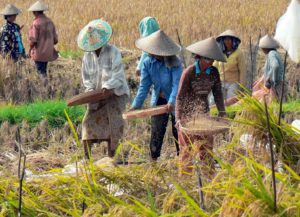
Conclusion
The benefits and harms of wild rice depend on how it is harvested or cooked, as well as the amount consumed. Its unusual taste only vaguely resembles the properties of white rice. The use of this valuable cereal in food significantly enriches the diet and promotes the development of taste buds.

